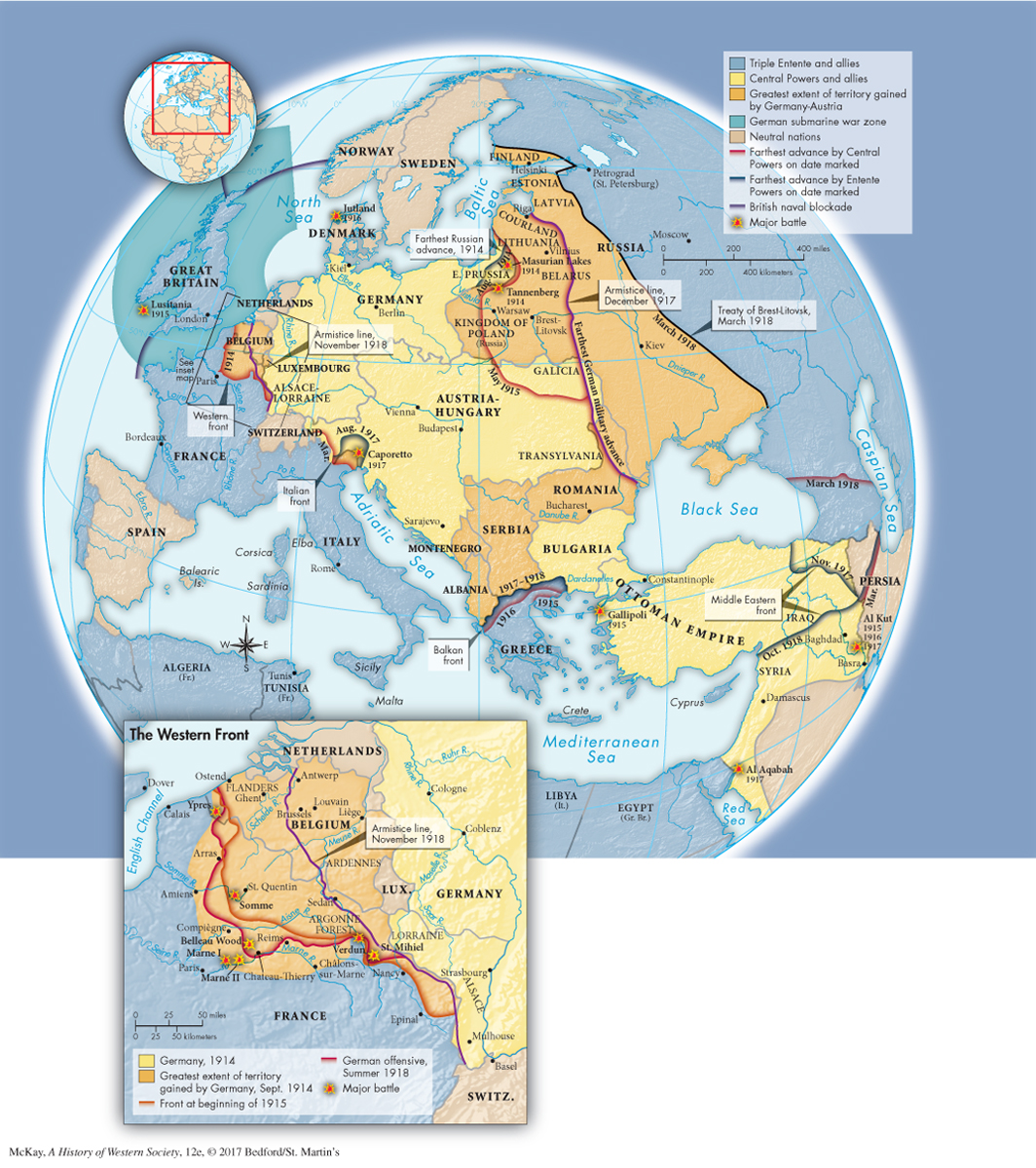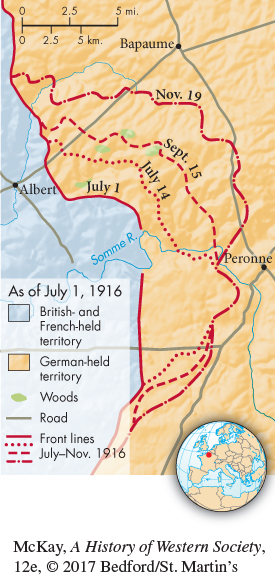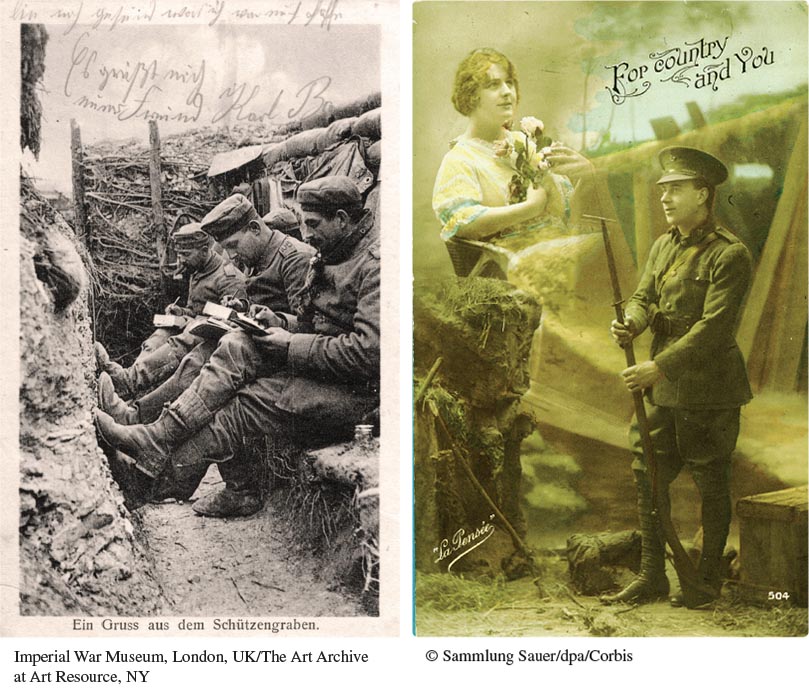A History of Western Society: Printed Page 833
A History of Western Society, Value Edition: Printed Page 803
A History of Western Society, Concise Edition: Printed Page 834
Stalemate and Slaughter on the Western Front
In the face of the German invasion, the Belgian army heroically defended its homeland and fell back in good order to join a rapidly landed British army corps near the Franco-
On September 6 the French attacked a gap in the German line at the Battle of the Marne. For three days, France threw everything into the attack. At one point, the French government desperately requisitioned all the taxis of Paris to rush reserves to the front. Finally, the Germans fell back. France had been miraculously saved (Map 25.3).

With the armies stalled, both sides began to dig trenches to protect themselves from machine-
The leading generals of the combatant nations, who had learned military tactics and strategy in the nineteenth century, struggled to understand trench warfare. For four years they repeated the same mistakes, mounting massive offensives designed to achieve decisive breakthroughs. Brutal frontal assaults against highly fortified trenches might overrun the enemy’s frontline, but attacking soldiers rarely captured any substantial territory. The French and British offensives of 1915 never gained more than three miles of territory. In 1916 the unsuccessful German campaign against Verdun left over 700,000 soldiers killed or wounded, and ended with the combatants in their original positions. The results in 1917 were little better. In hard-

The Battle of the Somme, a great British offensive undertaken in the summer of 1916 in northern France, exemplified the horrors of trench warfare. The battle began with a weeklong heavy artillery bombardment on the German lines, intended to cut the barbed wire fortifications, decimate the enemy trenches, and prevent the Germans from making an effective defense. For seven days and nights, the British artillery fired nonstop on the German lines, delivering about 1.5 million shells. On July 1 the British went “over the top,” climbing out of the trenches and moving into no-
During the bombardment, the Germans had fled to their dugouts — underground shelters dug deep into the trenches — where they suffered from lack of water, food, and sleep. But they survived. As the British soldiers neared the German lines and the shelling stopped, the Germans emerged from their bunkers, set up their machine guns, and mowed down the approaching troops. In many places, the wire had not been cut by the bombardment, so the attackers, held in place by the wire, made easy targets. About 20,000 British men were killed and 40,000 more were wounded on just the first day, a crushing loss that shook troop morale and public opinion at home. The battle lasted until November, and in the end the British did push the Germans back — a whole seven miles. Some 420,000 British, 200,000 French, and 600,000 Germans were killed or wounded fighting over an insignificant scrap of land.

As the war ground on, exhausted soldiers found it difficult to comprehend or describe the bloody reality of their experiences at the front. As one French soldier wrote:
I went over the top, I ran, I shouted, I hit, I can’t remember where or who. I crossed the wire, jumped over holes, crawled through shell craters still stinking of explosives, men were falling, shot in two as they ran; shouts and gasps were half muffled by the sweeping surge of gunfire. But it was like a nightmare mist all around me. . . .
The anonymous, almost unreal qualities of high-